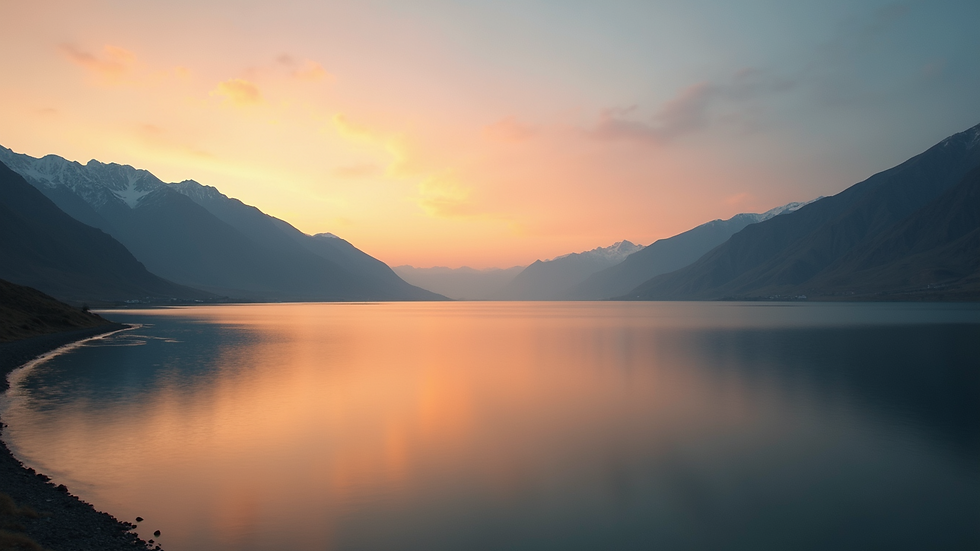Unveiling the Hidden Gems of Leh Ladakh: A Comprehensive Travel Guide
- Shakti Sisters Expeditions

- Mar 30
- 4 min read
Leh Ladakh is a breathtaking region in northern India that has captivated adventurers, nature lovers, and spiritual seekers from around the world. With its dramatic landscapes nestled between towering Himalayan peaks and the Zanskar range, Ladakh offers a unique mix of culture and adventure. Whether you are drawn to serene high-altitude monasteries or the excitement of motorcycle rides along winding mountain roads, Leh Ladakh promises an unforgettable experience. This comprehensive travel guide will help you uncover the hidden treasures of Leh Ladakh and make the most of your visit.
Getting There: The Journey Begins
Getting to Leh Ladakh is an adventure in itself. The most popular way to arrive is by air, with flights commonly operating from major Indian cities, including Delhi and Srinagar. The aerial view of the breathtaking mountains during your descent is an experience you won’t forget.
If you prefer road travel, you have two main routes: the Manali-Leh highway and the Srinagar-Leh highway. The Manali-Leh highway covers approximately 474 kilometers and offers stunning views of lush valleys and snow-capped mountains. In contrast, the Srinagar-Leh highway spans about 415 kilometers and showcases beautiful landscapes, including the picturesque Sonamarg and Dras regions. Both routes can be challenging; proper acclimatization is vital because of the high altitude. Make sure to carry necessary medications and stay hydrated!

Ideal Travel Period
The best season to visit Leh Ladakh is in the summer, from May to September. During these months, the weather is pleasant, ideal for sightseeing, trekking, and engaging in outdoor activities. The winter months can be magical but harsh. If you enjoy snow activities, visit between December and February. Always check road conditions and weather forecasts to ensure safe travel.
Essential Attractions to Explore
Leh Palace: A Glimpse into History
The Leh Palace, built in the 17th century, towers over the town of Leh. This ancient site, reminiscent of the Potala Palace in Lhasa, Tibet, offers fascinating insights into Ladakh's royal history. Ascending the palace grants you panoramic views of the sprawling Indus Valley and the majestic surrounding mountains.
As you wander through its corridors, admire the intricate murals and rich history that echo within its walls. Don’t miss the mesmerizing sunset vistas, which are a perfect time for photography.
Pangong Lake: Nature’s Spellbinding Beauty
A trip to Ladakh isn't complete without visiting Pangong Lake. This high-altitude lake, straddling the Indo-China border, is famous for its striking blue hues that change throughout the day. Set against rugged mountains and surrounded by vast landscapes, it offers a serene, almost otherworldly experience.
You can spend a peaceful afternoon by the lakeside, capturing photographs or engaging with local communities who camp nearby. For the most breathtaking views, visit during sunrise or sunset — travelers often describe these moments as among the most beautiful they have ever witnessed.

Nubra Valley: A Desert in the Mountains
Exploring Nubra Valley reveals a unique blend of sandy desert landscapes and lush greenery. To access this area, you must travel across the Khardung La Pass, one of the highest motorable roads globally, peaking at around 5,359 meters.
The valley is famous for its Bactrian camels and expansive sand dunes, which create a surreal contrast against the backdrop of tall mountains. Visit the Diskit Monastery to see a stunning 32-meter statue of Maitreya Buddha. Nubra Valley is ideal for adventure seekers, offering a variety of trekking routes.
Monasteries: Spiritual Retreats
Ladakh is dotted with ancient monasteries that provide spiritual solace and stunning beauty. Notable ones include Hemis, Thiksey, and Shey Monastery, each showcasing unique architectural styles and offering insights into the region's rich Buddhist culture.
At Hemis Monastery, the largest in Ladakh, the annual festival celebrating the birth of Guru Padmasambhava draws numerous visitors and locals. Participating in prayer ceremonies and witnessing vibrant festivals adds a cultural depth to your experience.
Local Cuisine: A Taste of Ladakh
Ladakh’s cuisine is a delightful amalgamation of diverse cultural influences. Don’t miss local dishes such as:
Thukpa: a flavorful noodle soup
Momos: delicious steamed dumplings filled with vegetables or meat
Chhutagi: a traditional pasta dish perfect for cold days
You should also try Butter Tea, a unique mixture of tea, salt, and butter. It certainly is an acquired taste but a cherished staple in Ladakhi households.
Traveler's Recommendations
Allow Time for Acclimatization: Give your body time to adjust to the high altitude to avoid discomfort.
Check Permit Requirements: Some areas require special permits, especially near borders. Prepare necessary documents beforehand.
Dress Appropriately: Layer your clothing, as temperatures can change significantly during the day. Don't forget sunscreen and sunglasses, as UV exposure is higher at altitude.
Respect Cultural Norms: Ladakh is culturally rich; it’s crucial to respect local traditions in monasteries and rural communities.
Stay Hydrated: Drink plenty of water to ward off altitude sickness.
Final Thoughts
Leh Ladakh is one of India’s most stunning regions, blending breathtaking landscapes, vibrant culture, and rich history. This travel guide aims to unveil the hidden gems of this extraordinary area, helping travelers maximize their experiences.
Whether captivated by the enchanting views of Pangong Lake, the historical significance of Leh Palace, or the peaceful atmosphere of ancient monasteries, Ladakh offers moments that resonate long after your visit. As you embark on your journey, embrace the beauty surrounding you and allow the tranquility of this remarkable land to create lasting memories.
Prepare to create unforgettable experiences in this magical land!





Comments